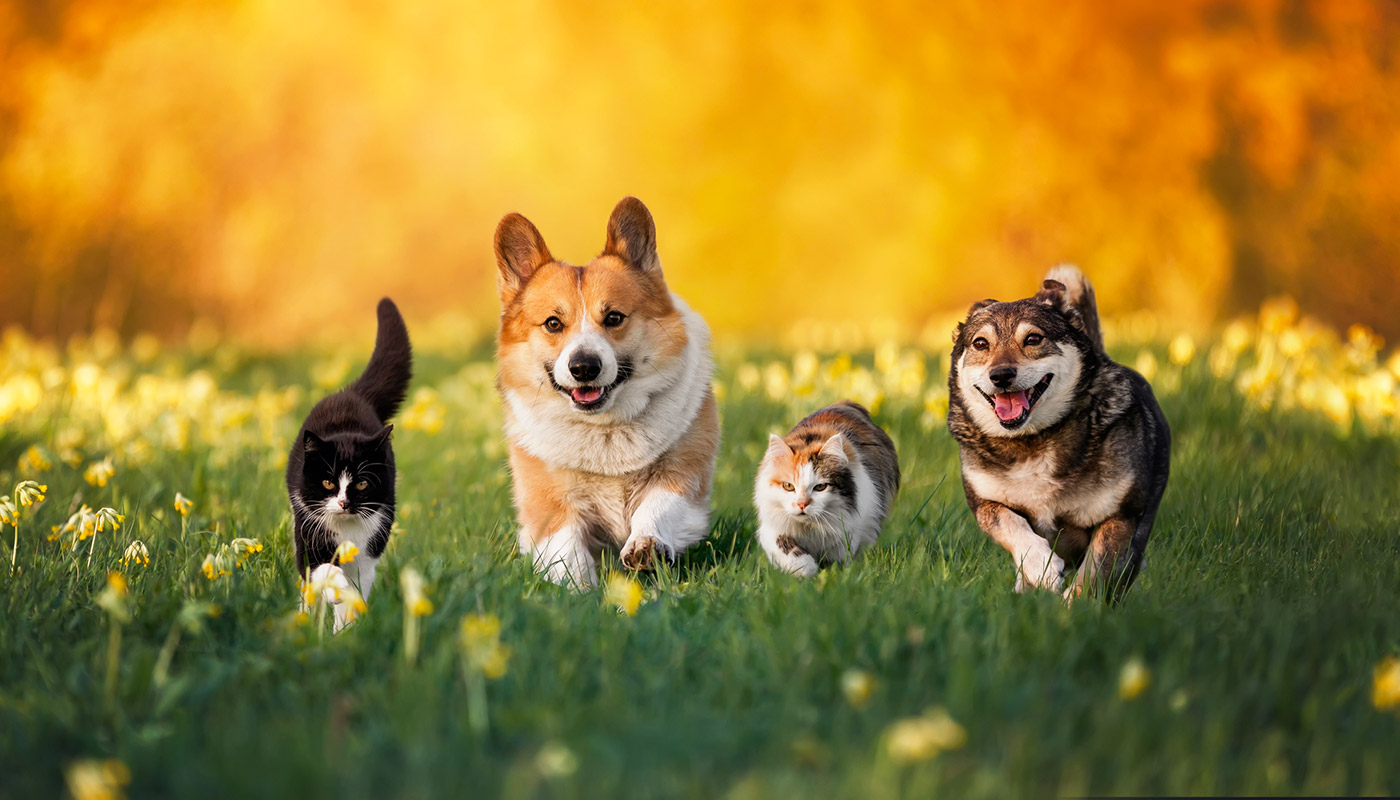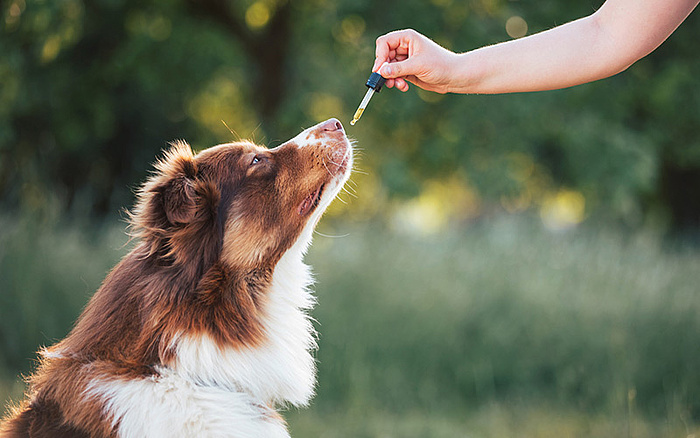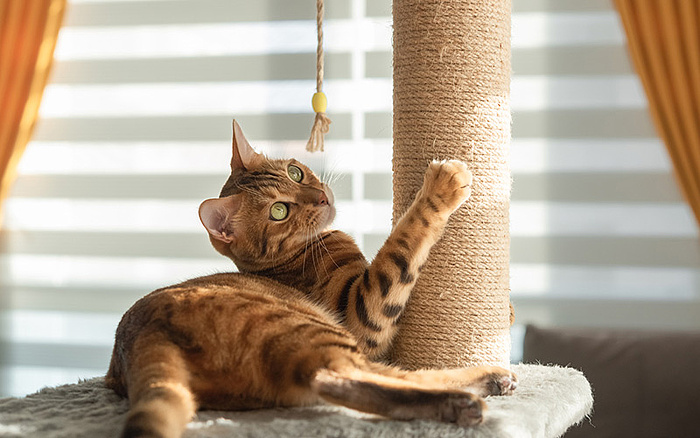
Everyday IP: Paws, claws and IP laws
Whether they are saving lives or just saving your spot on the couch, pets are a hugely important part of the human world. So it is little wonder our dedication to furry, scaly and feathered friends has inspired generations of innovators, leading to all manner of Intellectual Property (IP) tales connected to dogs, cats and other animals.
Discover the history behind a few of the inventions created to care for Fido and Mittens and catch a glimpse at the IP protections that could lead the pack in the future.
Biting into pet food history
Despite their modern-day status as man's best friend, dogs used to eat more like man's best garbage disposals. Dining on dinner leftovers and scavenged scraps, they likely never imagined the feasts awaiting their great-great-grandpuppies — but things changed in 1860. Inventor James Spratt, previously known for his work on various lightning rod improvements, electrified England's pet scene with Spratt's Meat Fibrine Dog Cakes, which would be patented in the United States in 1881. This early commercial pet food combined grains, vegetables and bone fragments, as uncovered by a scientific analysis of an almost 100-year-old sample discovered in Antarctica.
In 1907, American inventor Carleton Ellis complemented the cake with the now-famous cookie: a patent for the first bone-shaped dog biscuit made from waste milk produced by slaughterhouses. The shape has now become iconic alongside other treat innovations, including pill pouches — edible packets to fool animals into taking their medicine. The term "pill pouches" even stirred up a trademark infringement case between Mars Incorporated and The J.M. Smucker Company, with a U.S. District Judge ruling that it was a merely descriptive phrase.

A little sugar may help make the medicine more palatable for humans, but it can be difficult to "convince" pets to take what is good for them. Hiding pills and capsules inside tasty morsels is an ingenious solution to this problem.
When the industry is not chasing its tail over IP law, it is prolific in pet food progress. For example, cats, too, have reaped their fair share of treats, enjoying inventions like mountable lollipops. With consumers worldwide more aware of their pets' needs, it was a quick logical leap for inventors to combine nutrition and entertainment.
The patents of play
Although today's cats and dogs may take their belongings for granted, household animals were not always lucky enough to have toys that dispense tasty surprises. Innovations in this area only took off when mechanic Joe Markham turned around to find his dog Fritz gnawing on the rubber axle stop of a disassembled Volkswagen Bus. The rubber vehicle part was the only thing that had ever slowed the voracious chewer and was the inspiration behind the snowman-shaped KONG toy. First released in 1976, a modern hollow version now serves as a perfect method of snack delivery.
In fact, many innovations in the pet entertainment area cross over with our daily lives — take the Frisbee. First hitting the skies in 1958, the throwable disk evolved from the incidentally aerodynamic pie tins of the Frisbie Pie Company. An improved design was patented in 1967 to create the mainstay of dog parks everywhere. Another example is Frank Crow's cat tree, which was protected in 1969 and presents plenty of similarities to the jungle gym patented in 1923. The inventor of the playground fixture, Sebastian Hinton, was appropriately a patent attorney.

Not only do cat trees provide a safe perch for indoor felines away from heirlooms, electronics and other frangibles, but they also offer enticing surfaces where the itch to sharpen claws can be scratched.
Many of these inventions are designed around play and bonding, but some — like the cat tree — specifically highlight exercise as a key benefit. Although this is an vital element of overall pet care, it does not work alone to keep our animal friends happy and healthy.
Kitty cures and doggy doctors
With some sources estimating a global pet care market of more than $250 billion USD in 2024, it should come as no surprise that developments in this area are numerous, popular and fast-moving. Examples range from food that cleans your pet's teeth to a vaccine against respiratory infections in dogs, not to mention the trademark-troublesome treats for disguising medicine.
Today, inventions for pet healthcare run the breadth of the medical sciences.
- Health monitors: Wearables like smart collars follow the example of smartwatches and provide metrics about an animal's activity levels, vital signs, sleeping patterns and more.
- At-home care: From easy-to-use diagnostic kits to veterinary telemedical advice, new technology can help you fulfill your pet's health needs without stepping out the door.
However, some of the most fascinating products in pet care and medicine may still be around the corner. One drug, yet to enter clinical trials, promises the tantalizing possibility of extending a dog's lifespan by slowing the aging process. Meanwhile, South Korean technology company SK Telecom recently brought artificial intelligence (AI) X-ray analysis to Australian veterinarians. These and similar advancements present a wealth of opportunities for both the pet care industry and the IP community, representing progress that will shape both for years to come.

Smartphone apps allow pet owners to stay on top of vaccinations and medications, connect with veterinarians and manage their animal's health records. Even GPS trackers have become a part of everyday life for many.
On the other side of the coin, this much development also means that looking after an animal is growing increasingly expensive and complicated, even becoming inaccessible for some. Fortunately, creative IP has presented plenty of digital solutions.
Pixelated pets
Some of the first digital pets leaped to life in 1995 with the release of "Dogz," a video game allowing users to adopt and care for virtual pooches. The resulting "Petz" series developed to include other animals over the years, overlapping with the perhaps more famous "Tamagotchi" that first hatched in Japan. From there, digital pets expanded to include "Neopets," "Nintendogs," "Webkinz" and even "Pokémon." One of the latest entries in this category is the "Punirune," another Japanese product, introducing a unique tactile dimension where owners can insert their finger into the device to "touch" their squishy digital companion.
This path to virtual adoption has been paved by numerous inventive patents, including:
- Animation and simulation techniques for visualizing synthetic creatures
- Interactive systems that generate electronic versions of real-world toys
- Communication apparatuses allowing virtual pets to learn words from players
- Simulation devices for fostering virtual creatures
- Digital animal breeding systems that enable users to generate new pets
Of course, the development has not stopped there. A pending patent from Mars Incorporated brings the worlds of real and digital pets closer than ever by creating three-dimensional representations of living animals — avatars intended to display both the appearance and mannerisms of a furry friend. This is just one more example of how our love of pets has inspired some revolutionary and exciting IP.
Are you using your creativity for the betterment of animals and the owners everywhere? Contact the Dennemeyer team for the IP expertise you need to get everyone's tails wagging.
Filed in

IP infringement disputes abound in the film industry but some are more dramatic than others. Explore the unusual IP cases spawned from prominent movies.



